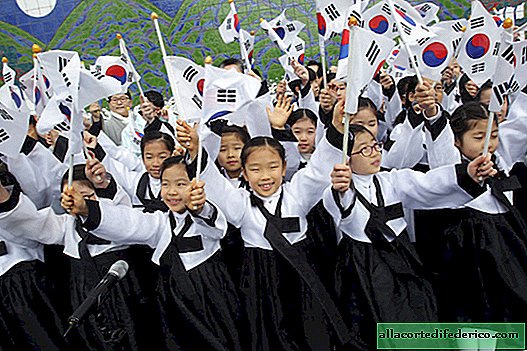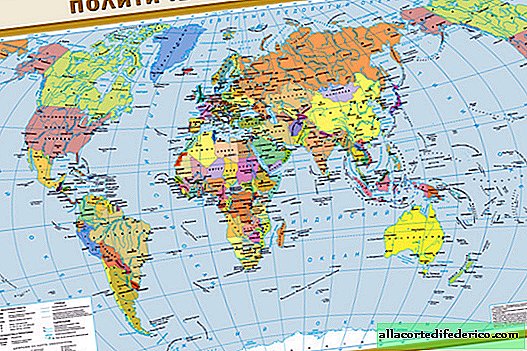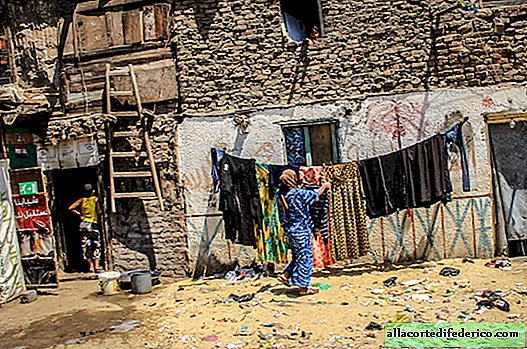Reckoning for an economic miracle: in South Korea, women no longer want to give birth to children
From year to year, South Korea occupies a leading position in terms of economic development. Here, a high level of population incomes, high-tech production predominates, and in many macroeconomic indicators, the country is ahead of most European countries. But this economic well-being has a downside. South Korea, like Japan and many other developed countries of the world, has faced demographic problems, among which there is an extremely low birth rate and rapid aging of the population.

For many years these problems have been discussed at the highest level, all kinds of stimulating laws and state programs with full funding have been adopted, but significant results have not yet been achieved. Moreover, in the past 2018, the country recorded the lowest birth rate in the last 14 years, when the total fertility rate (average number of births per woman) was 0.98. This is one of the lowest rates in the world.

And once the situation with the birth rate in South Korea was absolutely the opposite. In an agrarian and poor country in the middle of the 20th century, authorities urged young Koreans to have no more than 2 children, propagandizing a decrease in the birth rate and convincing everyone that girls are as desirable children as boys are. Propaganda posters of that period stated that the traditional large family model leads to overpopulation and does not allow Koreans to achieve economic prosperity.
 Photograph of a mid-20th century South Korean family: mother, 5 daughters, the long-awaited youngest son and grandson
Photograph of a mid-20th century South Korean family: mother, 5 daughters, the long-awaited youngest son and grandson  And this is the end of the 20th century: the number of the younger generation is not so great
And this is the end of the 20th century: the number of the younger generation is not so great These efforts brought faster results than modern demographic policies, and birth rates began to decline. In the 80s, it was already at the level of simple reproduction of the population, when the total coefficient became 2.1. But the birth rates, having reached the level necessary for the state, did not stabilize, but continued to decline. Thus, by the end of the 20th century, another demographic problem had already arisen in South Korea - the low birth rate. Women no longer wanted to sit at home and give birth to 2,3,4 children, as it was several decades ago. They entered universities, received education, got a prestigious job and built a career, earning on a par with men, because the economic situation in the country and the development of the social sphere made it possible. And if earlier, to ensure their old age, Koreans sought to have as many children as possible and be sure to give birth to a son, even if the family already has 4 daughters, then modern social guarantees provide decent retirement benefits for pensioners. This, too, was an important factor affecting the decline in the birth rate.
 This is how the age and sex structure of the population of South Korea looked in 1965, when the authorities called for restricting the birth rate
This is how the age and sex structure of the population of South Korea looked in 1965, when the authorities called for restricting the birth rate  And this is a modern picture of the age and sex structure of the population, when the authorities are trying by all means to increase the birth rate
And this is a modern picture of the age and sex structure of the population, when the authorities are trying by all means to increase the birth rateAnother important factor complicating the struggle of the state for increasing the birth rate and for increasing the population as a whole is the high level of suicides in the country, including among young people. Since the 80s of the last century, suicide rates in South Korea have grown more than 4 times, and today it has become one of the country's national problems.

Today, the state demographic policy is aimed at increasing the birth rate. But, despite all the measures and more than 150 billion US dollars spent for these purposes, it has not yet been possible to change the situation. And while sociologists are trying to find the reason for this and are considering ways to solve the problem, the birth rate in the country continues to fall. According to experts, by 2030, about 25% of the population will be Koreans over 65 years old. As for the population, there are different forecasts. According to the most optimistic of them, by 2050 the country's population will be 50.45 million people, instead of modern 51.16 million. According to other sources, this figure may amount to only 40 million people, and then even the influx of migrants will not be able to fill the lack of labor resources, which will inevitably lead to economic problems.

















